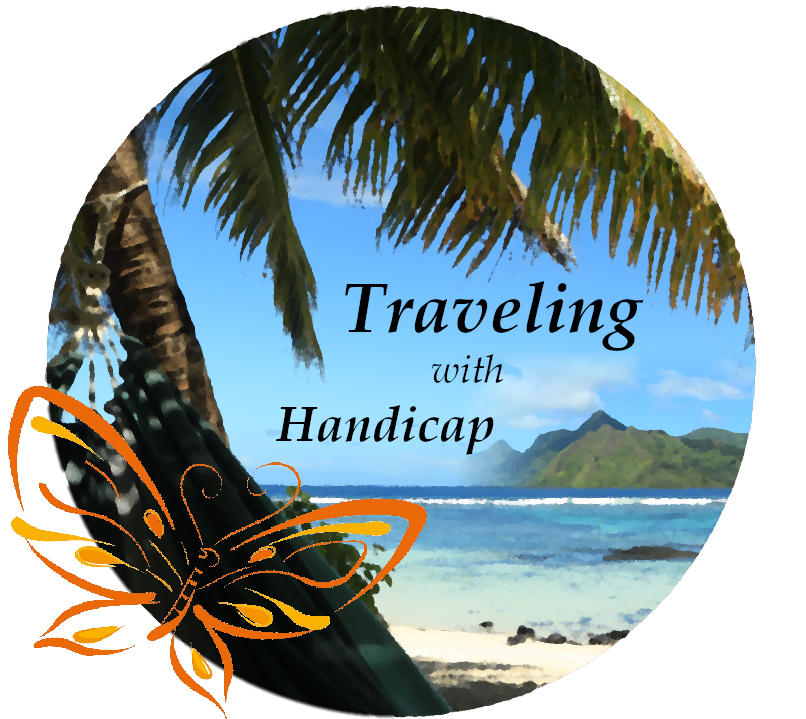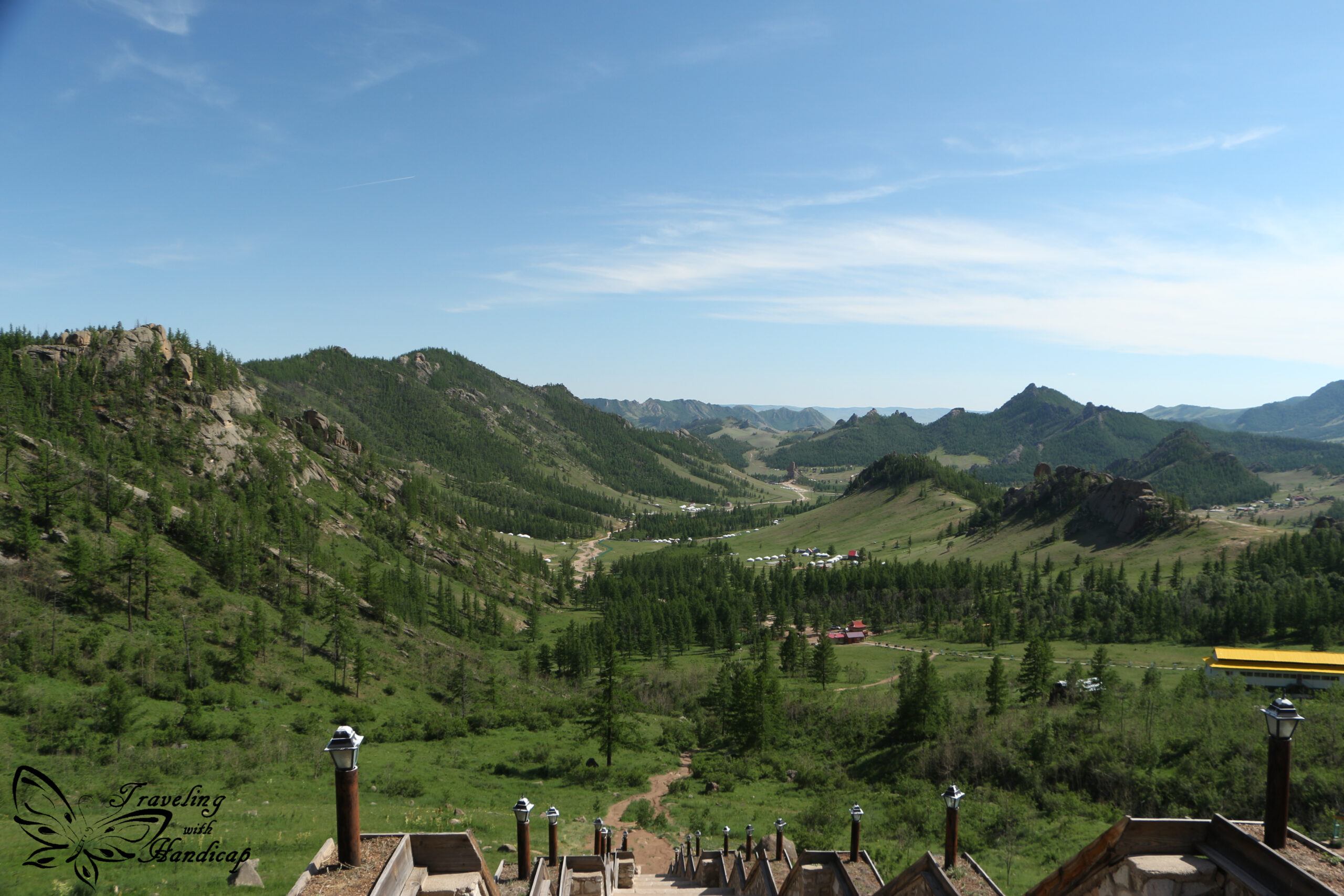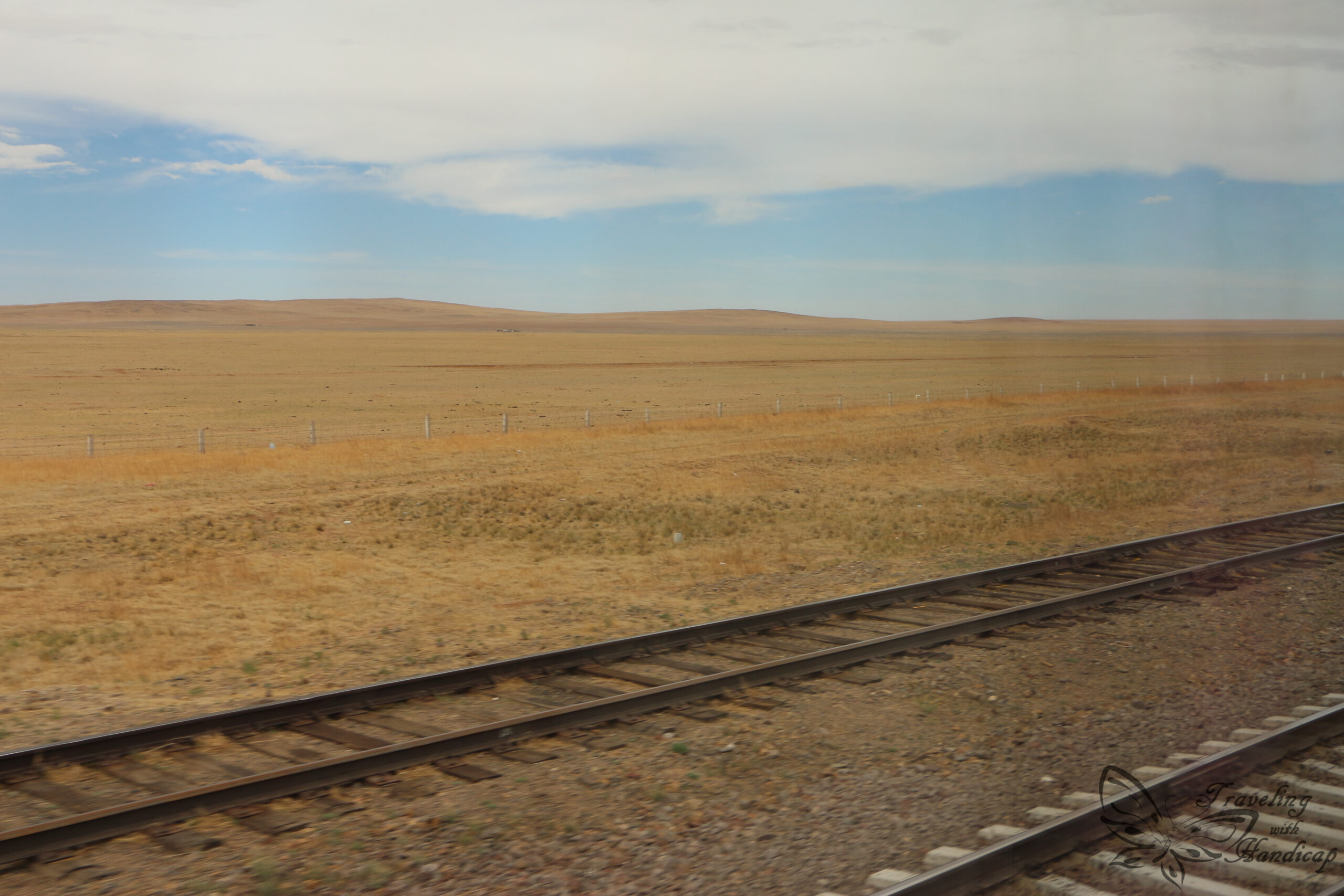The world reveals itself to those that travel on foot.
Werner Herzog
Towns in and around the Cordillera Blanca
Huaraz
The town Huaraz is the most touristy town neighboring the Cordillera Blanca. It is also the capital of the Ancash region of Peru. There are many bus connections from Lima to Huaraz as the latter offers enough hotels and things to do to acclimatize for the altitude. After staying in Lima at almost sea level, one needs at least three days in Huaraz before going on any proper high-altitude hikes in the Cordillera Blanca.
Huaraz has a nice center with the Plaza de Armas and some more little plazas with plants growing. Also, there are some hiking stores and supermarket to buy or rent all you require for trekking or climbing in the Cordillera Blanca. Actually, you may find appropriate hiking stuff here (similar to Cusco) which you won’t find in Lima. There are a few museums in town which I didn’t visit. For me, it was sufficient to walk around in town. There is not much in town to do, but still good restaurants and cafés to chill while acclimatizing.











Caraz
If you want to visit the Laguna Parón or the Santa Cruz Trek, Caraz is much closer to the starting points than Huaraz. The drive from Huaraz to Caraz in a collectivo actually takes 3 hours. Caraz itself offers less than Huaraz. Thus, in order to prepare yourself for any multi-day hike, do your food-shopping and hiking gear rentals in Huaraz. Since I didn’t have to rent anything, I bought my food in Huaraz and continued from Caraz further up north (after the hike).
When I was in Huaraz, everyone I asked told me that the Laguna Parón is closed. For different reasons. Some have told because of security reasons (nature, water-level), others mentioned budgeting as the reason. When I was in Caraz, I learned that the number of people they allowed to enter is very reduced, thus, Huaraz stopped bringing in the large buses with tourists. As such, the few tourists from Caraz are able to enter. I really wanted to visit this laguna. Therefore, I was quite happy that it worked out unexpectedly.



Other villages
There are many smaller or bigger villages in and around the Cordillera Blanca such as Yungay, Vaquería, Cashapampa … From Yungay you can take colectivos to Yamana and get off in Vaquería for the Santa Cruz Trek. After the track, you’ll arrive in Cashapampa and then take a colectivo back to Caraz.
You most likely have to ask locals on the streets regarding collectivos. This is because many hotels or hostels as well as taxi drivers would get you on rather expensive tours or taxis. As often before, I had to be really hard on repeating that I will take a colectivo, no taxi, and refused to get on a taxi or get a taxi driver “helping” me. When you are really hard and talk to the people in Spanish, after a while, they get that they can’t trick you for money and let go. Then, jump on the next colectivo which is quite full (higher likelihood to leave soon).
Chavín de Huantar and Chacas are other towns popular for tours from Huaraz. I visited Chavín with a tour in order to use the bus ride and stops as a step to acclimatize for above 4000 m above sea level. Since Chavín has an interesting archeological site, more on this further down the text.
Huascarán National Park: Hiking in the Cordillera Blanca
I explored…
Laguna Querococha
This laguna at 3980 m above sea level was actually on the way to the village of Chavín de Huantar. We made a stop there on the way. In my impression, a nice and quite big laguna. However, it doesn’t beat Laguna Parón which is at a different level. 😉






Laguna Parón
From Caraz, it is a 2 hours drive to the parking area next to the laguna. From there, you already have a great view and impression of the color of the laguna. However, it gets a lot better when you make your way up to the mirador (30 minutes walk, including a bit of “climbing” on big rocks). The view from up there is stunning! If there are more people, they might also offer boat cruises on the laguna I assume. At least, there were some little boats on the shore next to the parking and there is no other village to take a boat to.




Santa Cruz Trek
The Santa Cruz trek was my personal highlight of the Cordillera Blanca region. You may do it in three days, but then you have to do quite some distance and altitude on the second day as well as start early on the third day. This is because the last colectivo leaves around 3pm which you shouldn’t miss. I could have done it within three days with respect to the distance, but didn’t want to start early and rush for the departure time at 3 pm. Therefore, I’ve done it in 4 days.
Colectivo Ride Caraz -> Vaquería
From Caraz, I had to take a colectivo to Yungay and from Yungay another one towards Yamana, getting off in Vaquería. This colectivo ride was quite scenic. However, again as often experienced already, Peruvian guides / drivers care about the money and not the experience of their customers. So when we passed a laguna, and it was very scenic, some Peruvian tourists asked the driver to stop for 10 seconds so that they could take a photo through the window without the constant shaking (due to the gravel road). The driver’s response was nothing, but he is not paid for that. I tried some pics, however, they are not really in focus due to the shaking.
Nevertheless, the view was great, similar enough to the Laguna 69 hike, which I didn’t do. The colectivo had to go through one valley, uphill to a (theoretical) viewpoint and downhill into another valley after. The only stop we had was at the park entrance, to buy the ticket for the national park. There, I paid 60 soles for 4 days whereas signs in Huaraz said something like 150 soles for 4 or more days. Not sure which agency tries to make ridiculous amounts of extra money by stupid tourists.


Day 1: Vaquería → Camping next to Laguna Tucto (13 km)
The hike from Vaquería is first downhill and then the same amount and a little more uphill. At one point you pass a ranger’s station where you have to register and which is the last toilet and bin you may use. Paria is often mentioned as a camping spot if you do the track in 4 days, however, I continued to the next one as there were so many cows in Paria. The Laguna Tucto was on higher altitude, so we couldn’t see it, but I and 4 other people camped at the same area, protected by trees, at 4000 m above sea level close to a tiny wild river for water.





Day 2: Laguna Tucto → Punta Union → Laguna Jatuncocha (16 km)
From the camp spot, I started early in the morning, to not have too much heat on the way up to Punta Union. I had no problems with the altitude as I took it slowly and stopped for a little break at a laguna just before taking the ultimate and steep 2 km uphill. The view from Punta Union, the “joining point” between two valleys, was stunning. I was lucky to not have any clouds.



Originally I thought about camping in Taullipampa, not too far away. However, there were many cows again, so I continued to the next one. There were some rude Peruvian people, so I continued to Jatunquisar, which was just dirt. Therefore, I hiked unplanned 16 km on that day until the Laguna. There, I met many others who did the hike within three days. This is only possible if you camp close to the laguna (if you don’t hike during the dark). Otherwise, Cashapampa is too far to reach the last colectivo by 3 pm.




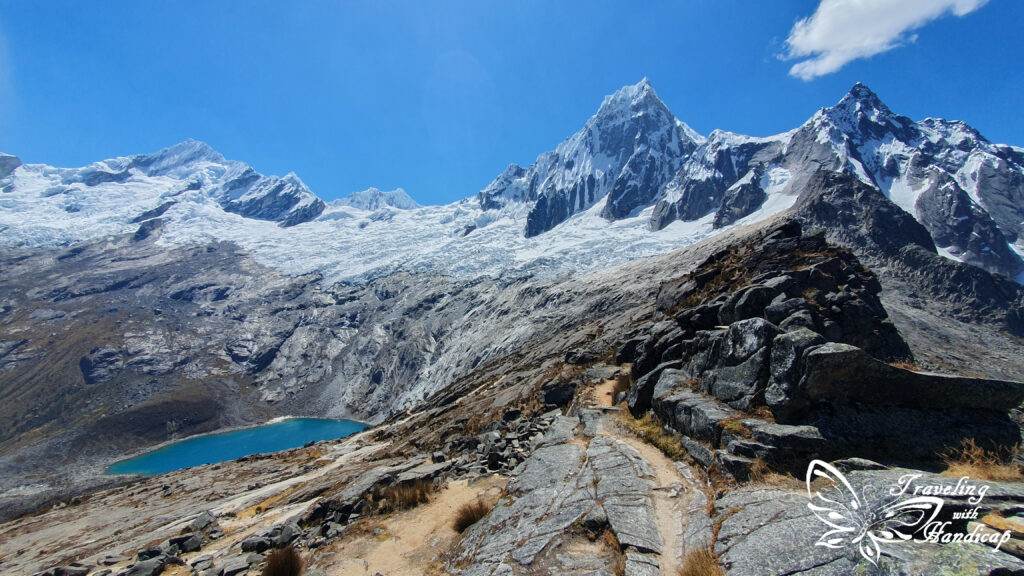
Day 3: Laguna Jatuncha → Campground close to Cashapampa (11 km)
I had a great and relaxed morning at the laguna and walked very slowly. This part was not too much downhill, so I could take the chance to ingest the change in landscape. More and more trees, greener, more birds. I was almost alone on the track this day, as all the others started really early to make it to Cashapampa.






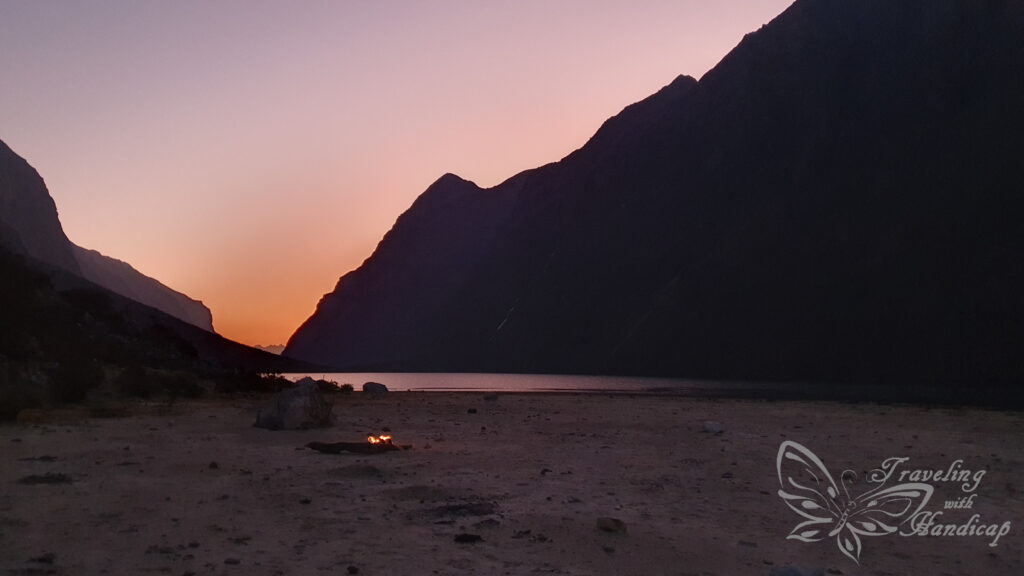

Day 4: Campground -> Cashapampa (5 km)
Could be included into day 3. A last part of quite some downhill, this time within lush trees and birds singing. I went in the early morning, had some breakfast in Cashapampa and waited for the colectivo to Caraz. This way, I still had enough time to repack, shower and everything. I also got my bus ticket for the next day to continue to northern Peru (Trujillo) on a road through a canyon.



The Canyon (between Caraz and Huallanca)
When taking a bus from Huaraz to Trujillo, the bus will most likely take the coastal road, as it is faster. However, from Caraz, buses either go back to Huaraz and take the coastal road (very long) or go through the Canyon towards Huallanca and a more direct road to Trujillo, through the mountains. I read in one blog that this canyon is very scenic, so I went for it. Honestly, the ride was insane. Firstly, for the view, the canyon was really stunning. Moreover, it differed quite a lot from the Colca Canyon close to Arequipa.






What else to do and see
You may do plenty of tours from Huaraz or organize all that by yourself. I am not sure about the Pastoruri Glaciar, but all others can definitely be done without tours. In my opinion, this would be more relaxing than with a tour. This is because I am not satisfied with the behavior of guides all across Peru.
Both tour providers and guides are caring a lot more about the money than about safety and security of the passengers. If you have some experience on both multi-day hikes and high altitude, you may undoubtedly go by yourself or a group of friends. Even if guides tell you horror stories or say that it’s not recommended. This is their way of getting you to pay for bad service and a big group of people.








Laguna Churup
The Laguna Churup hike can be easily done from Huaraz. There are collectivos quite some way up and you may hike the ultimate part. A good acclimatizing hike. I didn’t hike up there as I figured the laguna wouldn’t be the best one to see, and I didn’t need it for the purpose of acclimatizing.
Glaciar Pastoruri
Assuming you haven’t been to Patagonia, especially to the region “Los Glaciares”, then it might be a great experience to visit a glacier from a short distance. For me, visiting the Perito Moreno Glacier near El Chalten, Argentina, was an absolute highlight, so I skipped this glacier.
Laguna 69
The Laguna 69 hike is a popular hiking day-trip from Huaraz. You only need to be aware that the laguna is really tiny and the hike comparable tough and long. So if you just want to see a big and great laguna, go for Laguna Parón.
When I have been told that Laguna Parón is closed, I reserved a tour for Laguna 69. The views from the hike should be stunning, and it would be good to acclimatize for the Santa Cruz trek. However, in the morning while I waited, nobody picked me up until one hour later a guy came to tell me they are full and gave me the money back. Actually, very bad organization, they could have told me earlier. However, it worked out how I initially intended to travel: I had bad feelings about hiking with a guide and instead, I took a colectivo to Caraz with all my things and could even visit the (preferred) Laguna Parón from there.
When I took the colectivo from Yungay to Vaquería for the Santa Cruz trek, I got nearly the same views as from the Laguna 69 hike. Since I needed to take this colectivo anyway, I was happy I didn’t hike to Laguna 69 with a guide. Actually, you may hike there yourself, you may even camp. Just be aware that the last colectivo back to Yungay passes the starting point by 3pm, so you better start really early. It takes at minimum 3 hours to hike up, even if guides and tour providers mention less time. If you hike faster, you might get into problems with the altitude.



Huayhuash Trek
I have to admit, it’s tough to carry food for 8 days at such altitudes. However, if you are with a group of friends and able to split and share some things (tent, food etc.), you may as well go as a group. I have heard that the Huayhuash is named as one of the most spectacular hikes by people who have done it. I didn’t want to hike for 8 days, preferred the 4 days Santa Cruz trek. Also, because I didn’t want to stay in the area for so long. Maybe the Huayhuash is great. My personal highlight of 8 days was the Torres del Paine O-Trek in southern Chilean Patagonia.
Climbing
There are many climbing options within the Cordillera Blanca. Similar to El Chalten, I met people who just came here for a couple of weeks in order to climb. There are different stores in Huaraz to rent equipment, also for climbing, if you don’t have your own. Moreover, they offer (multi-day) climbing courses if you would like to get into it. Climbing with ropes is still something I would like to try. However, considering my restrictions, I would not try to do a course in Peru with those guides.
Archeological Sites: Chavín de Huantar
Sure, the Cordillera Blanca is mainly famous for its landscape, for the views. However, there are also one or the other archeological sights hidden to be explored. A famous one is Chavín de Huantar. A town at the other side of the Cordillera Blanca (with reference to Huaraz). In this town, or archeological site, respectively, thee are ruins and artifacts constructed as early as 1200 BC and occupied until 500 BC by the Chavín, a pre-Inca culture. You can visit the site, however, there are still very many question marks among archeologists. So you mainly see the remaining ruins but can’t learn a lot about that people.












I went with a tour. However, looking back, I should have taken a collectivo. Many big buses full of tourists are carried to Chavín every day and guided through the ruins. However, the walk is easily signed and the amount of information written on signs is similar to the amount gotten from the guide. Moreover, there are fewer people within one colectivo, so you might just arrive before all the buses and have a more relaxing time without queuing for photos.






